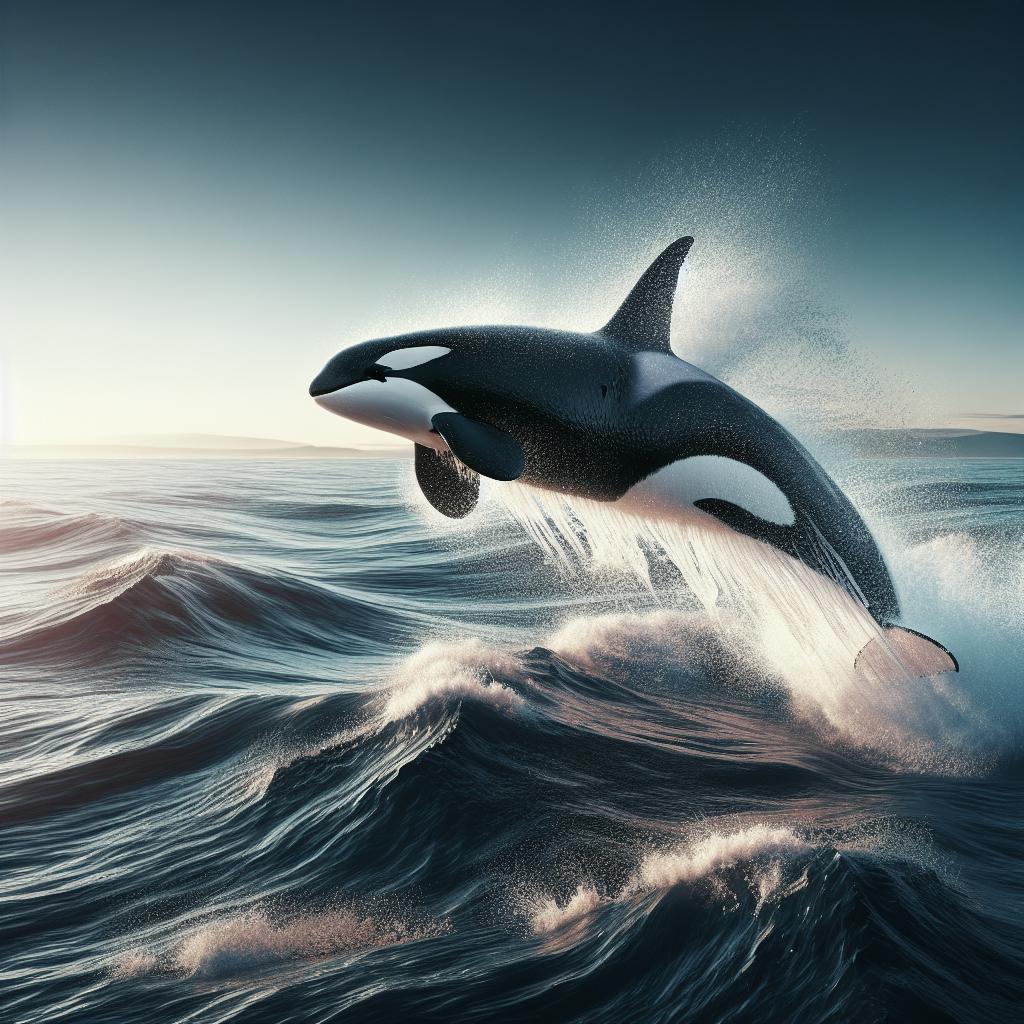Orcas, also known as killer whales, are one of the ocean’s most formidable predators and are renowned for their agility and speed in the water. Understanding their swimming capabilities involves exploring various aspects such as their cruising speed, hunting prowess, unique streamlined body, and the fusiform shape that aids in their remarkable aquatic feats. This blog post delves into these fascinating attributes, offering a comprehensive overview of what makes orcas such efficient swimmers. Whether you’re a marine biology enthusiast or just curious about these magnificent creatures, this article provides detailed insights into the remarkable speed and agility of orcas.
Cruising Speed
When it comes to the daily activities of orcas, cruising speed is a crucial aspect. Orcas typically travel at a consistent pace of about 5 to 6 miles per hour (8 to 9.7 kilometers per hour). This moderate speed allows them to conserve energy over long distances as they traverse the vast expanses of the ocean. They often travel in pods, which are family groups that can cover several hundred miles in search of food and suitable living conditions.
Comparatively, this cruising speed is not only for travel but also for social interactions and communication within the pod. The constant, steady pace facilitates synchronized movements and cohesive group dynamics, essential for their cooperative hunting strategies and maintaining social bonds. Understanding the orca’s cruising speed sheds light on their ability to navigate the oceans efficiently and sustain their social structures.
Hunting Speed
Orcas are apex predators, and their hunting speed significantly surpasses their cruising speed. When engaged in high-speed chases to capture prey, orcas can reach speeds of up to 34 miles per hour (55 kilometers per hour). This incredible burst of speed is essential for surprising and outmaneuvering their prey, which can include anything from fish and squid to seals and even other whales.
The ability to accelerate rapidly allows orcas to employ a variety of hunting techniques, such as tail slaps, coordinated attacks, and sophisticated ambush tactics. Their high-speed maneuvers are not just about brute force but also about precision and timing, making them one of the most efficient hunters in the ocean.
Incredibly Streamlined
The orca’s streamlined body is a marvel of natural engineering, designed to minimize water resistance and maximize speed. Their robust, torpedo-shaped form allows them to cut through the water with minimal effort, reducing drag and increasing their efficiency when swimming at high speeds. This streamlined physique is a key factor in their ability to achieve their remarkable speeds both during cruising and hunting.
The sleekness of their bodies also plays a significant role in their maneuverability. Orcas can execute sharp turns and sudden directional shifts with ease, which is vital when chasing agile prey. Their streamlined form is complemented by powerful, muscular tails and large pectoral fins that provide thrust and stability, enhancing their overall hydrodynamics.
Fusiform Shape
The term “fusiform” perfectly describes the orca’s body shape, which is spindle-like, tapering at both ends. This shape is highly advantageous for aquatic life, as it reduces turbulence and allows for smoother, faster swimming. A fusiform body minimizes the energy expenditure required to move through water, making orcas highly efficient swimmers.
Furthermore, the fusiform shape helps orcas maintain their speed over longer distances. It strikes an optimal balance between streamline and buoyancy, enabling orcas to swiftly navigate different oceanic environments. This structural adaptation is a testament to their evolutionary success and ability to thrive as top predators in the marine ecosystem.
See More Animals
If you found this article about orca speeds interesting, you might want to learn more about other aquatic creatures and their fascinating adaptations. Animals like dolphins, sharks, and seals have unique characteristics and speeds that make them equally intriguing subjects of study. Dive into our collection of marine life articles to expand your knowledge about the underwater world.
You can explore detailed articles on the remarkable swimming capabilities of different marine species and understand how they compare with the impressive speeds of orcas. From the lightning-fast bursts of the sailfish to the graceful glides of manta rays, there’s a wealth of information waiting for you.
Related Posts
Popular Posts
- Top 10 Snorkeling Spots in the World
- Tips for Capturing Marine Life Photography
- The Importance of Ocean Conservation
Editor’s Picks
- 10 Unexpected Facts About Marine Life
- How Technology is Revolutionizing Ocean Research
- Understanding Orca Behaviors: A Deep Dive
Future Prospects
| Aspect | Description |
|---|---|
| Cruising Speed | Orcas travel at a moderate pace of 5-6 mph, conserving energy over long distances and maintaining social structures. |
| Hunting Speed | During high-speed chases, orcas can reach up to 34 mph to capture prey efficiently. |
| Streamlined Body | Their sleek, robust form reduces water resistance, enhancing both speed and maneuverability. |
| Fusiform Shape | The spindle-like tapering at both ends minimizes turbulence and energy expenditure, making them efficient swimmers. |


